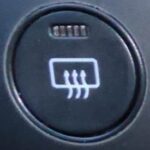The 2015 Volkswagen Tiguan remains a popular choice for drivers seeking a compact SUV that blends European driving dynamics with everyday practicality. However, like any vehicle, it’s essential to be aware of potential issues, especially when considering a used model. This guide, tailored for English-speaking markets, highlights the common problems associated with the 2015 VW Tiguan to help you make informed decisions and ensure reliable ownership.
One of the primary concerns for the 2015 Tiguan revolves around its 2.0T TSI engine (EA888 Gen-1). A critical point to investigate is the engine build date, which determines whether your Tiguan has the updated timing chain tensioner design. Locating this date is straightforward: simply find the white decal situated near the oil dipstick under the hood. The date is printed in the upper right corner in the European DAY:MONTH:YEAR format. Crucially, engines manufactured after January 2013 incorporate the improved chain tensioner, mitigating a potential weakness in earlier models. It’s important to note that the engine build date, and not the vehicle’s model year or assembly date on the door jamb sticker, is the definitive indicator for this engine component.
Shifting gears, the 2015 Tiguan offered either a rare 6-speed manual transmission or the more common 6-speed Aisin automatic transmission. This automatic transmission, while generally robust, requires diligent maintenance to prevent issues. The most prevalent problem is valve-body bore wear, which can be avoided by adhering to a strict fluid and filter change schedule. It’s recommended to perform these changes every 30,000 to 40,000 miles. Using the correct OEM specified fluid is paramount; avoid generic “universal” ATF fluids, as they may not meet the specific requirements of this transmission and could lead to premature wear or malfunction.
Engine maintenance extends beyond the timing chain tensioner and transmission fluid. Regular oil changes are crucial for the longevity of the 2.0T TSI engine. Adhering to a maximum 5,000-mile oil change interval is advisable. Furthermore, using only VW “502” specification oil, such as Mobil-1 0W-40 “European Formula,” and OEM VW, Mann, or Mahle oil filters ensures optimal engine protection and performance.
For Tiguan models equipped with all-wheel drive, remember to maintain the Haldex system and rear differential. Changing the Haldex oil and filter, along with the rear differential gear oil, every 50,000 miles is a necessary preventative measure to ensure smooth and reliable all-wheel-drive operation.
Another proactive maintenance item for the 2015 Tiguan is the PCV (Positive Crankcase Ventilation) unit. While replacement costs are relatively modest (around $150 and roughly 20 minutes of labor), preventative replacement is highly recommended. A failing PCV valve can lead to excessive crankcase pressure or vacuum, potentially causing the rear crankshaft seal to fail, a more costly repair. When replacing the PCV, ensure you obtain the latest revision, as Volkswagen has made several improvements to this part over time, and older, less reliable revisions may still be available at lower prices.
It’s also worth noting a feature absent in the first-generation (PQ35) Tiguan: automatic emergency braking. While newer generation Tiguans (MQB platform) boast improved crash test scores and include emergency braking, some sources suggest the newer models may have their own quality concerns. Researching owner forums for the newer Tiguan MQB models is recommended if considering an upgrade for safety features.
Finally, for those seeking a step up in luxury and features without straying far mechanically, consider the Audi Q3. Sharing the same engine, transmission, and suspension as the Gen-1 Tiguan, the Audi Q3 offers a more premium experience with features like leather power seats, panoramic sunroof, and upgraded lighting and trim often standard. While potentially costing around $6,000 more, the Q3 offers a more refined package and, according to some reports, potentially better reliability ratings than the Tiguan, possibly due to different manufacturing locations. However, be mindful of the Q3’s slightly smaller rear seat and cargo area and its somewhat dated infotainment system, although aftermarket upgrades are available.
In conclusion, the 2015 VW Tiguan, while a capable and enjoyable SUV, has specific maintenance needs and potential problem areas to be aware of. Focusing on engine build date for timing chain tensioner concerns, diligent transmission and engine oil maintenance, Haldex and differential servicing, and preventative PCV valve replacement will contribute significantly to a reliable ownership experience. Understanding these common problems empowers you to maintain your Tiguan effectively or make a well-informed purchase decision in the used car market.
